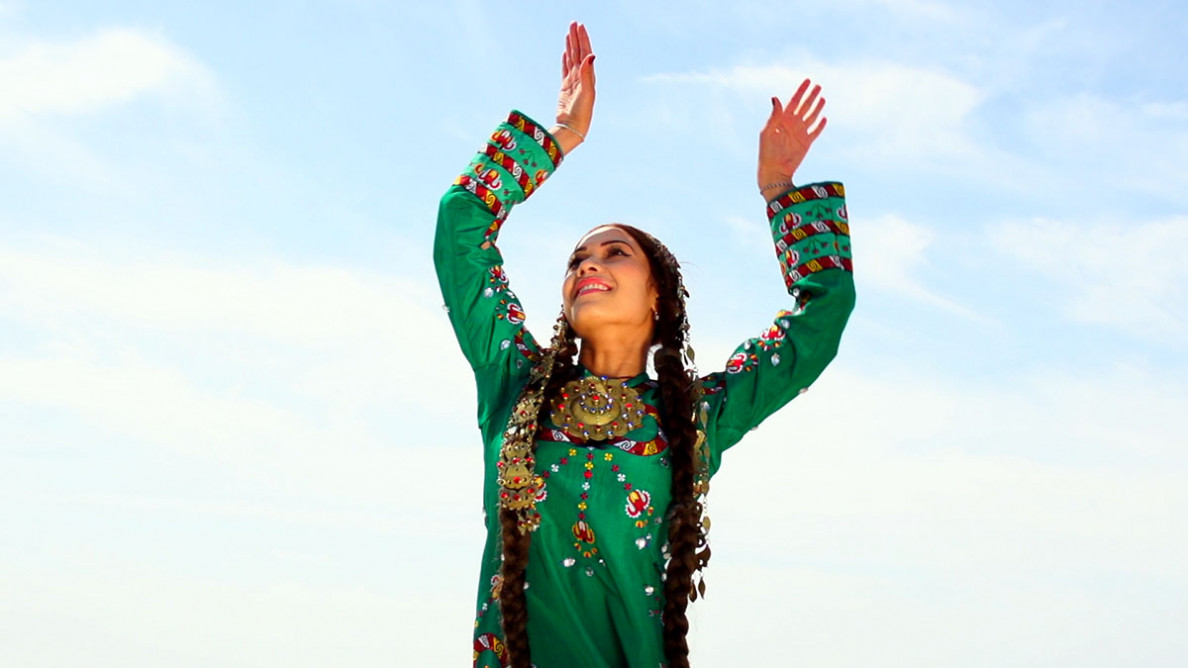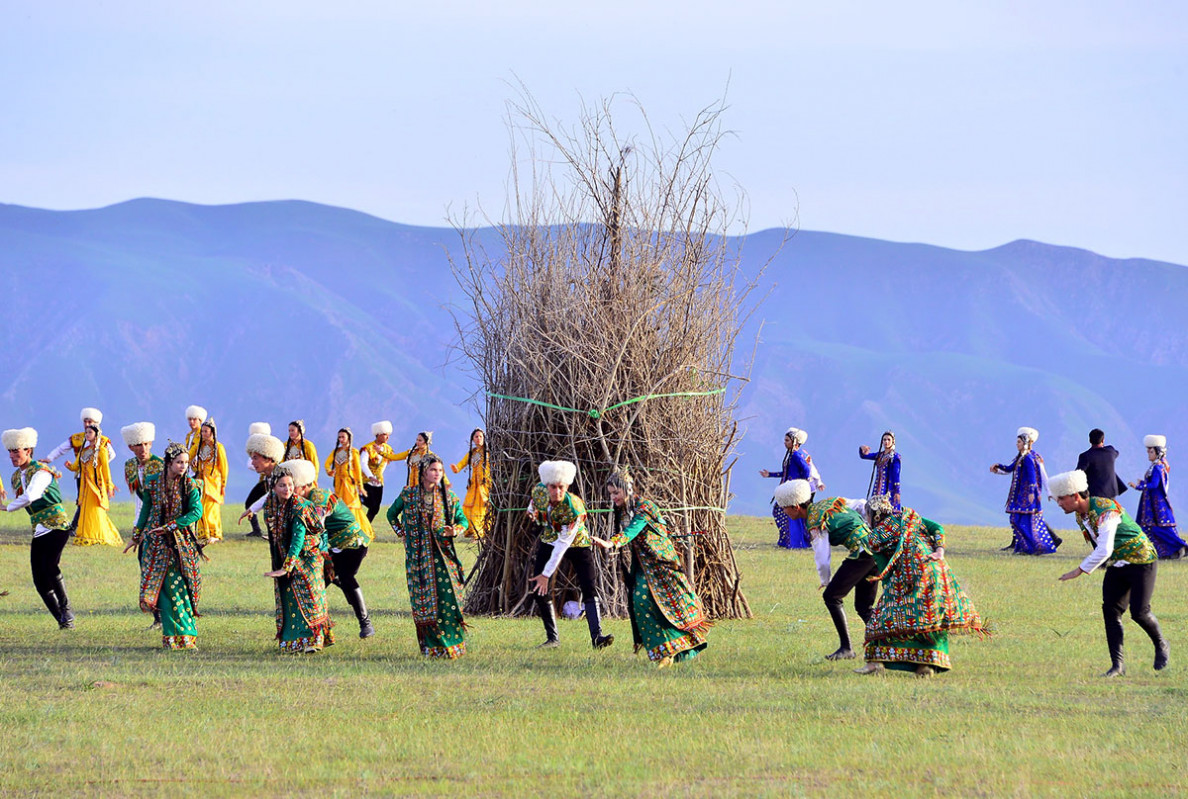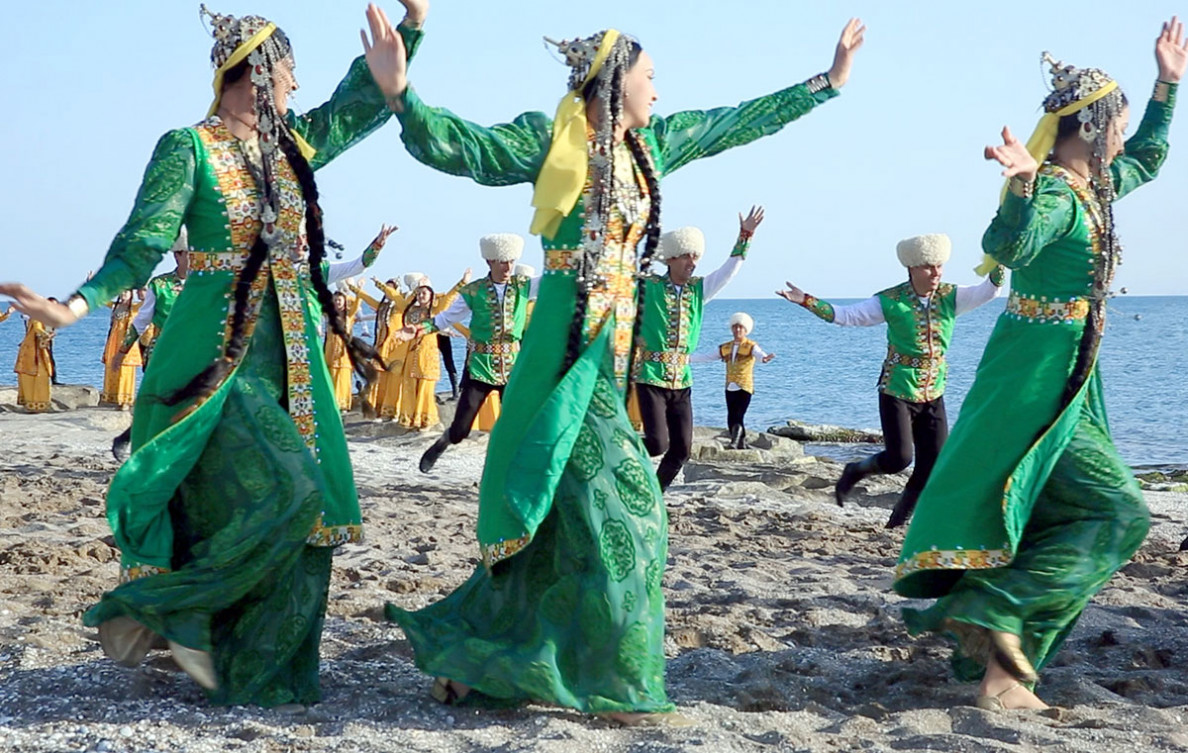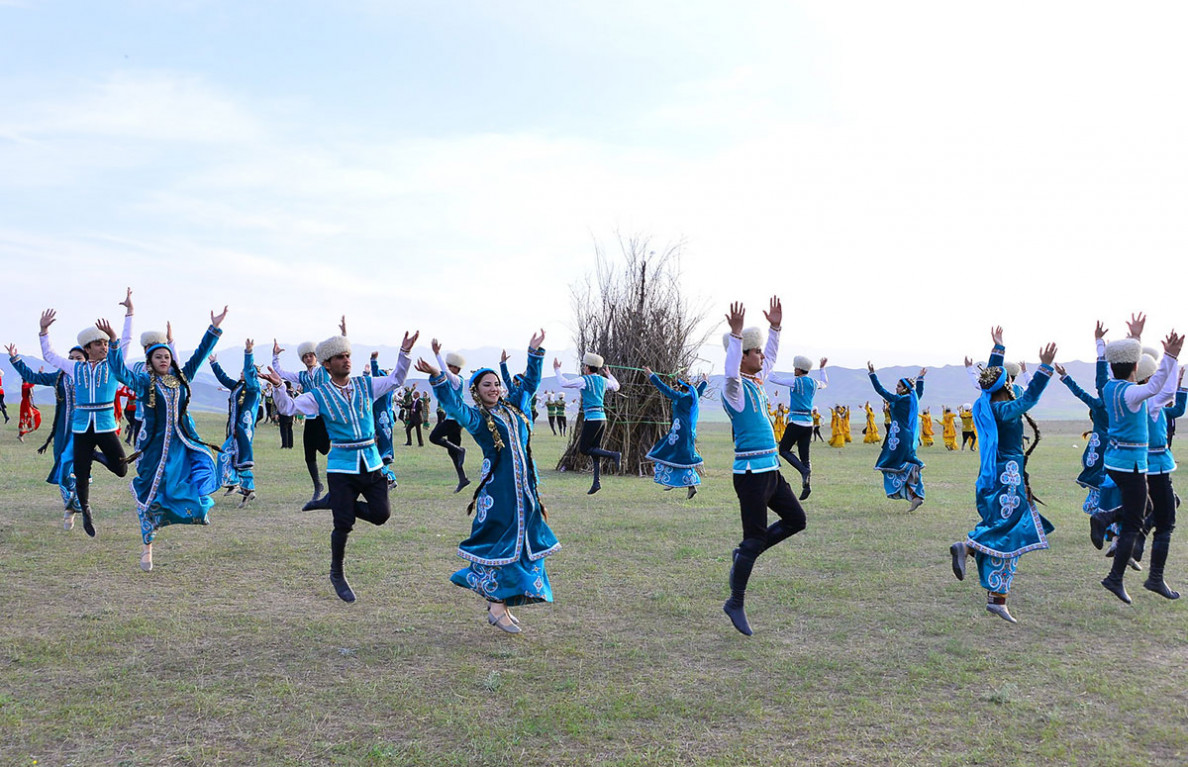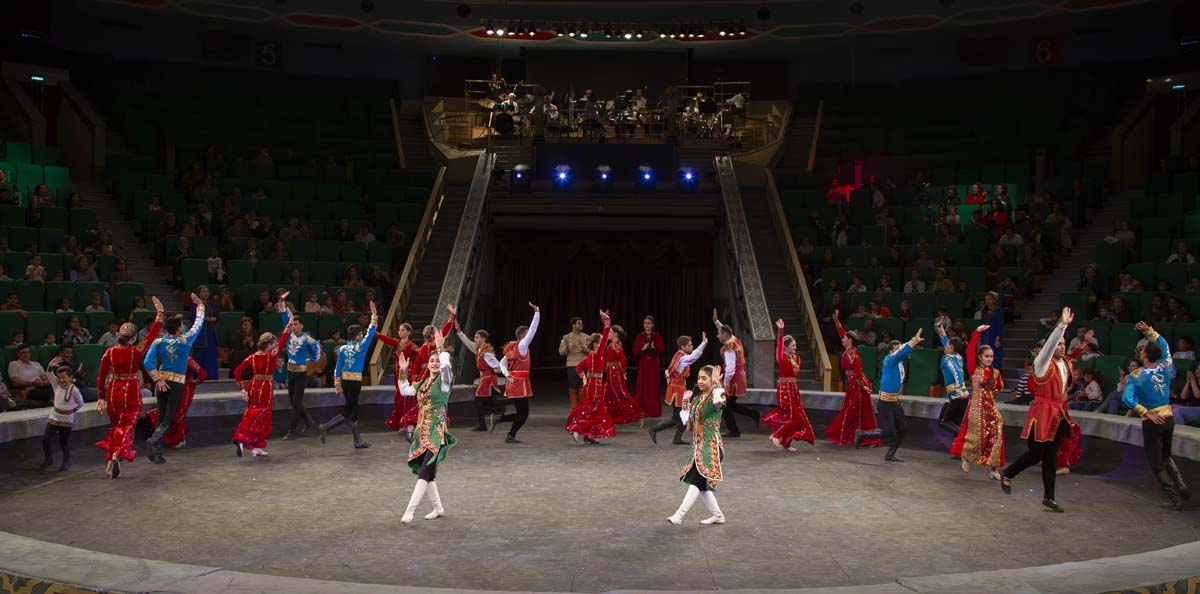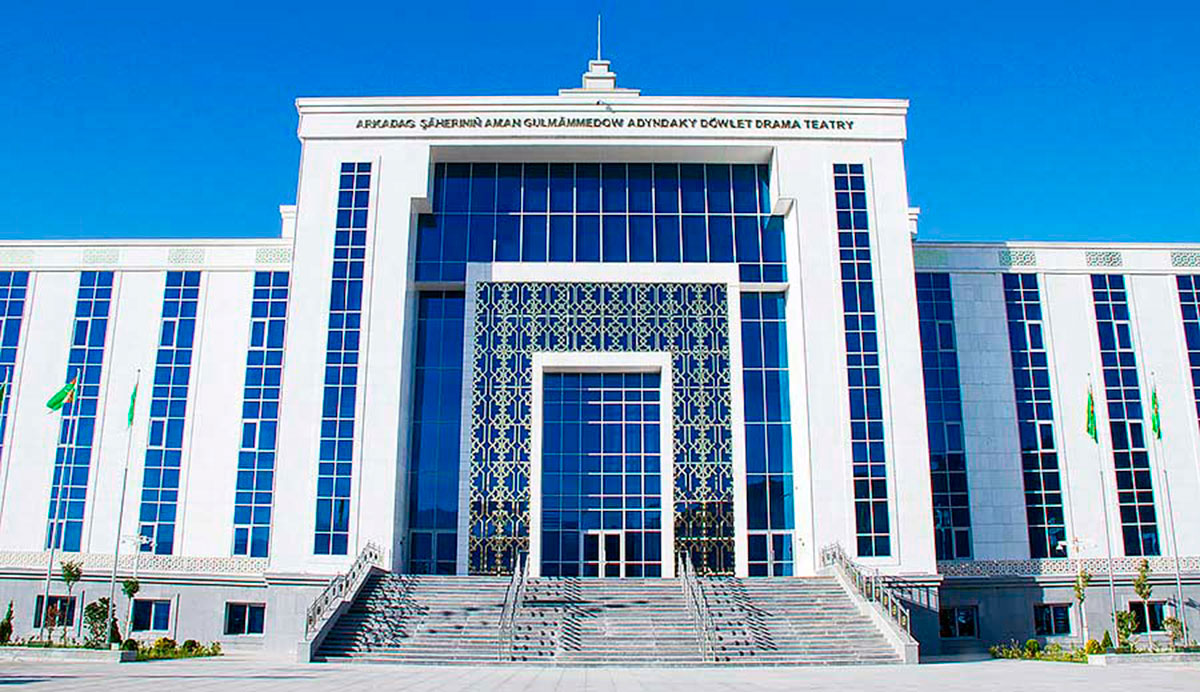In previous publications dedicated to the elements related to Turkmenistan in the list of intangible human cultural heritage, the Golden Age has spoken about the inclusion of the Epic of Gyorogly and spring celebration of Nowruz.
During the 12th session of Intergovernmental Committee for protection of intangible cultural heritage, which was held in Korean Jeju on December 2017, Turkmen national art of singing and dancing Kushtdepdy has been included to the Representaitve List of intangible human cultural heritage.
The majority of lovers of dance art has learned about this original folk art in the beginning of the 70s of the last century. Mamedoraz Hudayberdiyev, whose son Soyunmamed has dedicated his life to study of the history of kushtdepdy, was one of the first people who actively promoted the inclusion of the dance into the program of international folk festivals.
Soyunmamed Hudayberdiyev notes that kushtdepdy was very popular among the Turkmens living on the Caspian coast. Classic kushtdepdy consists of several cycles, which are increased by emotional condition of the singers. The cycles called ‘bir depim’, ‘iki depim’, ‘uch depim’, oturma depim’, ‘divana’, ‘sedrat’ and ‘zem-zem’.
The researcher notes that the first three of the cycles are the most popular nowadays. During ‘bir depim’, the dancers make half of a turn to the left by right arm and leg and return it back continuing moving around altogether. ‘Iki depim’ is a cycle whan dancers make two half of a turn two times in a row and ‘uch depim’ – three half of a turn.
The tradition of dancing has come from deep past. Before dancing, the following ritual used to take place – the shaman made a fire. Special place was selected for the fire, most often, it was a beautiful place, for example the fire was made next to a standalone tree near the spring or at the seafront.
The wise elders used to gather around ritual fire and discuss hunting, fishing, future harvest and many other routine things. After some time, young men and women were joining them at the fire. At certain moment, ‘gazalchi’ – virtuosic singer of lyrical poems ‘gazals’ gave a signal and everybody started dancing.
Each dancer had his own roles and strict order in the process of performance. There was not ordinary spectators. It was thought that one of the main goals of the dance was to express gratitude to the god of fire. However, Hudayberdiyev notes that Turkmens tried to highlight the solidarity with the whole nature not only with fire in their unique dance, which has no analogues. This is not occasionally that the word ‘kushtdepdy’ is translated as ‘ bird’s dance’ or ‘bird’s drum’ and used to be performed before the fishermen, who lived on the Caspian coast, went offshore for fishing. After their successful return, all people prayed together and after ‘gazalchi’ finished their singing, the dance was performed.
The fact that kushtedepdy includes seven elements, namely, clapping hands, kicking the ground, bent of torso, turn of the head, jumps, sit ups and turning, speaks about the solidarity with the nature. Clapping hands symbolized birds’ wing flapping for the seafarers as if it called them to help fishermen to find a way home.
Kushtdepdy bears powerful life-asserting message. It is not occasionally that saying “The Almighty gives health to those dancing kushtdepdy” is very popular in Turkmenistan.
Roman Teplyakov
Photo by Alexey Gimalitdinov and Meredurdy Roziyev




